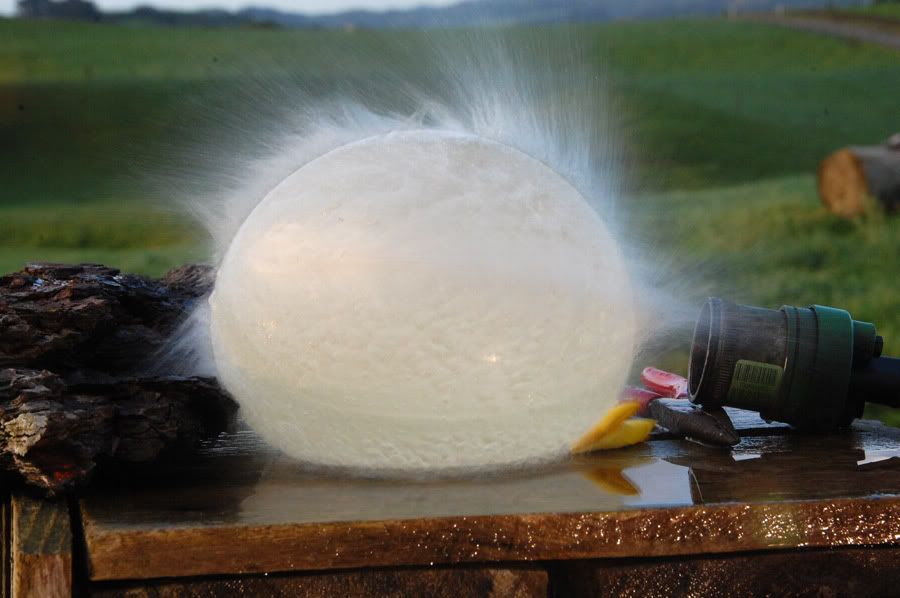
Most high-speed photography is done in the dark with a slow shutter speed and the motion being captured by a flash on low power , usually resulting in a captured speed of around 1/10000th of a second . See my post on
.
Tonight I managed to wire up my camera to trigger an event when the shutter opens and at very high speed .
I see many possibilities for this especially since I will no longer need to wait for darkness to do high speed photography .
I call this "superspeed" photography and am not sure if it has ever been done before .
I suppose time will tell if I get good results from this but so far this is what I've accomplished :
Doesn't look like much does it ? But that spark was triggered by the shutter of my camera opening at 1/200th second .

I did a few more tests and managed to take it all the way to 1/4000th sec and still capture the spark - triggered by my camera's shutter opening .
1/4000th second :

<br />
I can see all sorts of possibilities for high speed photography in broad daylight
Stay tuned !
20/01/2011 , I tried a few pictures outside in the evening ....

Then I went indoors to try and find something that would react nicely to a 20000 volt spark . A water drop didn't do much .

Some brown sugar looked slightly better .

Then one of the flies that had been annoying me all afternoon wandered between the wires - I couldn't help smiling as I initiated and photographed the last millisecond of the fly's life :)

I will try to find something that reacts nicely to a spark going through it , or perhaps use my 'monster flash' modification with its giant capacitor attached to generate some 'real' energy .
29/01/2011 .
Today I added a high performance coil to my hammerhead flash and am getting about 50 000 volts out of it .


